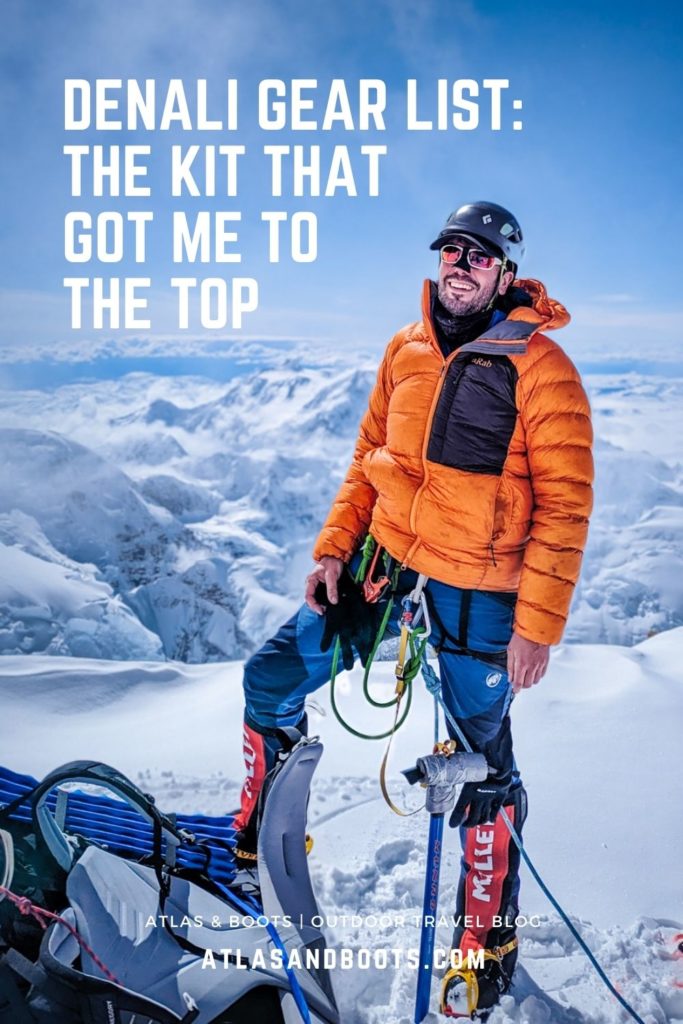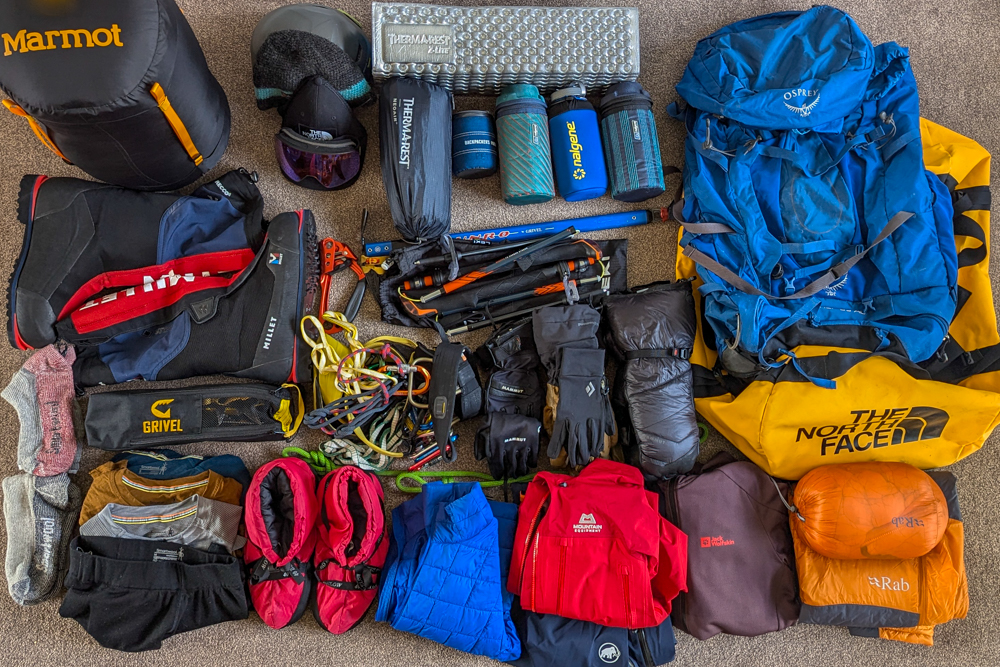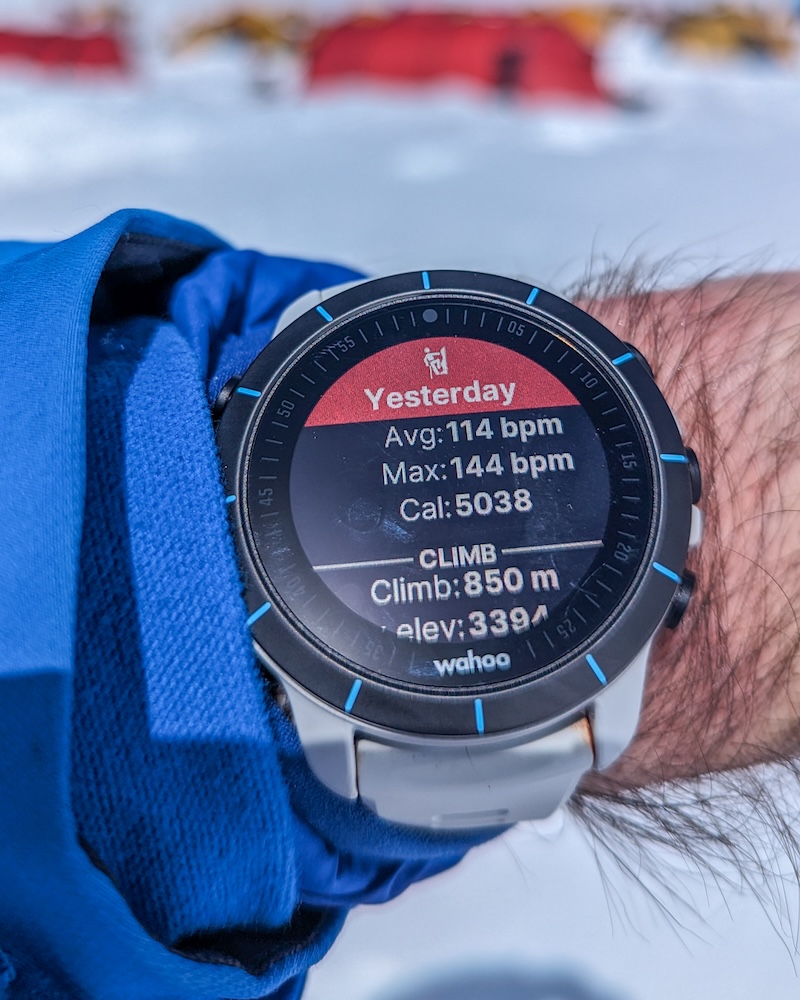My complete Denali gear list includes everything you’ll need to summit the highest mountain in North America
Denali in Alaska, USA, stands at a lofty 6,190m (20,310ft), making it North America’s highest mountain and one of the seven summits (the seven peaks that make up the highest point on every continent).
I recently returned from climbing Denali with American Alpine Institute (AAI). Any good guiding company will issue you a detailed kit list, but I always like to see exactly what others have used. As such, I thought it would be helpful to share my complete Denali gear list for future climbers to reference.
Denali gear list
As I joined a guided climb, tents and cooking equipment were supplied. However, climbers were responsible for supplying their sleeping system, footwear, mountaineering clothing and equipment along with any other personal items. A handful of items were available to hire from AAI but I would always recommend buying your own where possible. Hire gear may not always be in the best condition or available in your size.
I had much of the gear beforehand but there were some specialist items I needed, particularly when it came to some of the cold-weather gear. Denali is one of the coldest and windiest places in the USA, so it’s worth investing in the best and warmest available.
I did most of my shopping before I left the UK at Ellis Brigham but on arrival in Anchorage, Alaska, you will also have the opportunity to visit an outdoor store in case you’re missing any gear.
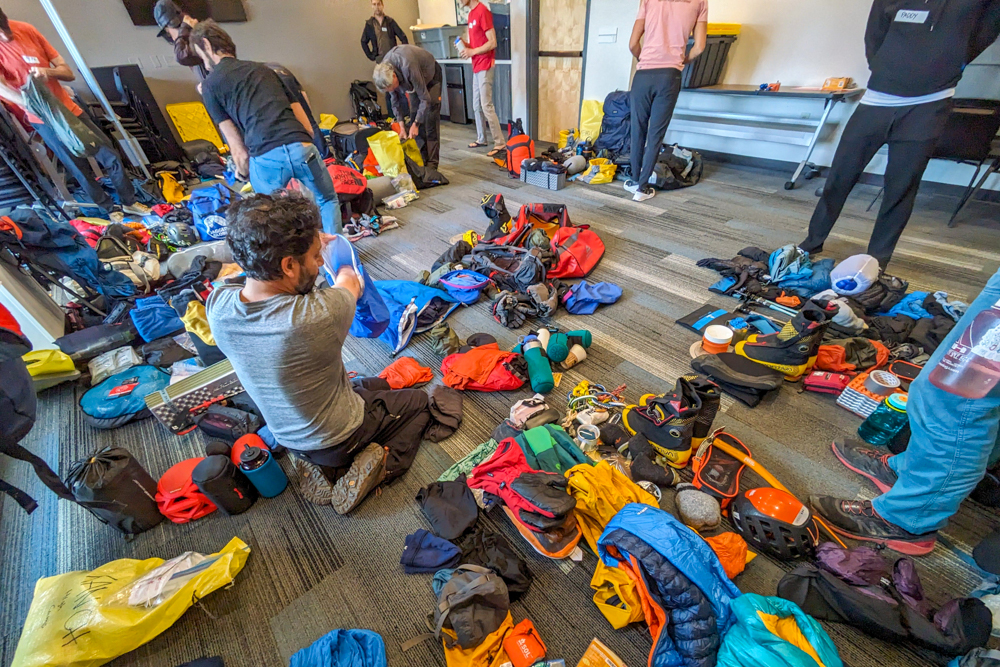
Even though Denali is ‘only’ a 6,000m mountain, some of the gear I bought – such as my sleeping system and mountaineering boots – is robust enough to use on Everest (if I ever make it there) and other 8,000m mountains.
Some items on the list below are optional – electronics and toiletries for example – but the majority are essential unless otherwise stated. For reference, I have linked to the exact gear I used where possible.
Sleeping system
For this expedition, I updated my sleeping system completely. Every piece of kit was new. It turned out to be one of the best decisions I ever made when it came to camping. I slept soundly every night and while the lack of oxygen at the higher camps may have been discomfiting at times, the cold never kept me awake. Read our dedicated sleeping system for Denali article for more information.
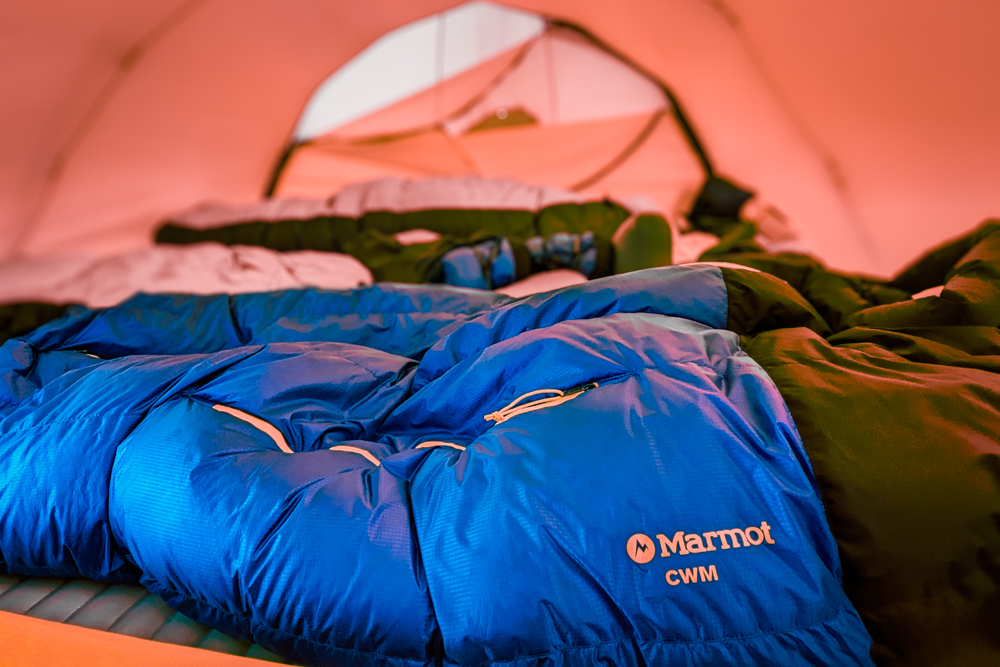
- Sleeping bag – Marmot CWM Sleeping Bag
- Inflatable pad – Therm-a-Rest NeoAir XTherm NXT MAX
- Foam mat – Therma-a-Rest Z Lite SOL
- Pillow – Sea to Summit Aeros Down Pillow
- Sleeping bag liner (silk) – optional
- Therm-a-Rest repair kit – comes with any Therm-a-Rest inflatable pad
Footwear
You will wear your mountaineering boots nearly all day, every day, so make sure you get a pair which fits well and is warm enough. They should be double boots – ideally triple – and at least rated for use at 6,000m. However, if you’re planning to climb higher mountains in the future then opt for 8,000m boots. Another advantage of 8,000m boots is that you won’t need to buy additional overboots which are needed for 6,000m boots.
In the evenings and during rest days, a pair of lightweight camp booties after a long day in your mountaineering boots are bliss. They can be worn with or without socks or even inside your mountaineering boots if the inner is removed.
Snowshoes are used until Camp 3 but not above. If you already own a pair then check with your guiding company whether they are suitable. They should be equipped with an integral crampon and/or aggressive traction on the bottom and should be no longer than 71cm (28in). If you don’t already own a pair, then I recommend hiring them unless you regularly use snowshoes.
- 1 x mountaineering boots – Millet Everest Summit GTX
- 1 x overboots – required for all boots except 8,000m ones; Forty Below Purple Haze
- 1 x crampons – Grivel G12 New Matic
- 1 x snowshoes – can be hired
- 1 x camp booties – Forty Below Camp Booties
Health & hygiene
Every climber should carry a personal first aid kit but guides do have a comprehensive kit available. Only use biodegradable toiletries in the mountains.
- Sunscreen (should be SPF 40)
- Lip block
- Hand sanitiser
- Eye mask
- Earplugs
- Tissues
- Wet wipes
- Foot powder
- Nail scissors/clippers
- Nail brush (optional)
- Painkillers
- Cough lozenges
- Plasters
- Compeed (blister protection)
- Rehydration powder sachets
- Antiseptic cream
- Diarrhoea treatment
- Penknife
- Garbage/bin bags
- Insect repellent (for use in Talkeetna)
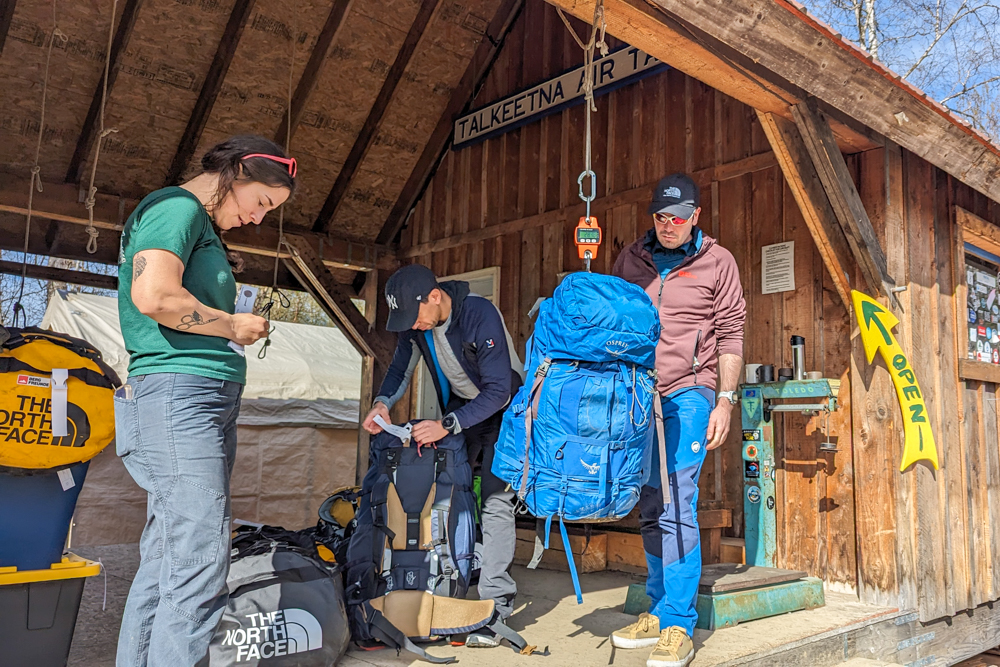
Luggage
On the mountain, you will need a 120-140l, durable kit bag for transporting your gear on the sledge and at least an 80l backpack. Use dry bags or stuff sacks to keep gear organised. The small kit bag and rucksack can be stored in Talkeetna, the small town where climbers take the flight onto the glacier.
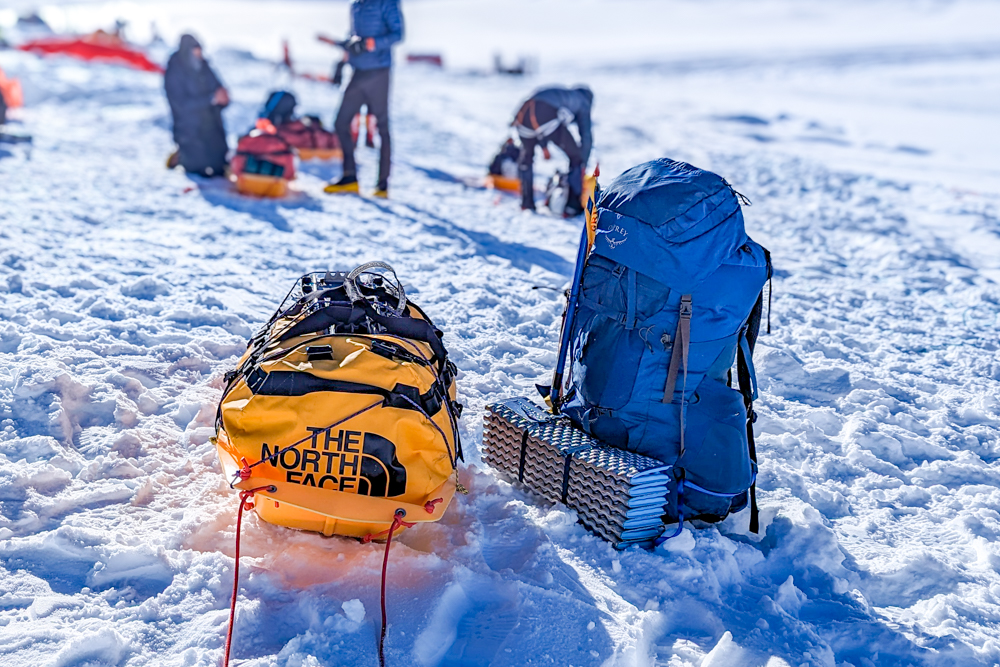
- Backpack – Osprey 85l Aether
- Duffel bag – The North Face Base Camp Duffel X-Large 132l
- Dry bags/stuff sacks
- Small kit bag (optional) – for storing your gear in Talkeetna
- Small rucksack (for carry-on luggage) – Stubble & Co Kit Bag
Lunches
AAI provides breakfasts and dinners on this expedition but climbers must provide their lunches. Guidance on what to pack was sent but this largely comes down to your preferences. You should avoid packing any items that require preparation or hot water. The most important thing is to have a variety of food which you will want to eat. The total weight for all 21 lunches should not exceed 6.8kg (15lb). Below is what I packed.
- 16 x RealMeal bars
- 1 x Backpacker’s Pantry Outer Space Survival Meal Kit
- 4 x Backpacker’s Pantry Desserts
- 24 x KIND Bars
- 2 x tubes of Pringles
- 2 x packs of Babybel
- 1 x pack of mini-bagels
- 1 x jar of peanut butter
- 1kg of trail mix
- 500g of jelly sweets/candies
- 1 x box of Oreos
- 10 x vegetarian pepperoni sticks
- 3 x tubes of electrolytes
Electronics
As it’s so far north and stays light throughout the night, you don’t need a headtorch on Denali. All of this is optional, but everyone I climbed with at least carried a smartphone (which you’ll need to be able to charge yourself).
- Smartphone – Google Pixel 8
- Watch – Wahoo ELEMNT RIVAL
- Powerbank
- Solar panel
- Kindle/e-reader
- Satellite messenger
- Charging cables
- Camera
- eSIM
Travel clothes
Two days in Anchorage first; up to five days afterwards in Talkeetna and Anchorage. The first thing you’ll want to do when you get off the mountain is put on some cotton.
- Loose trousers
- T-shirts
- Hoody/warm jacket
- Socks
- Underwear
- Sneakers/comfortable shoes
Documentation
- Passport + photocopies
- ESTA/visa information if required
- Insurance certificate and details
- Flight information
- Spending money (allow $500-$800 USD for tips)
Enjoyed this post? pin it for later…
